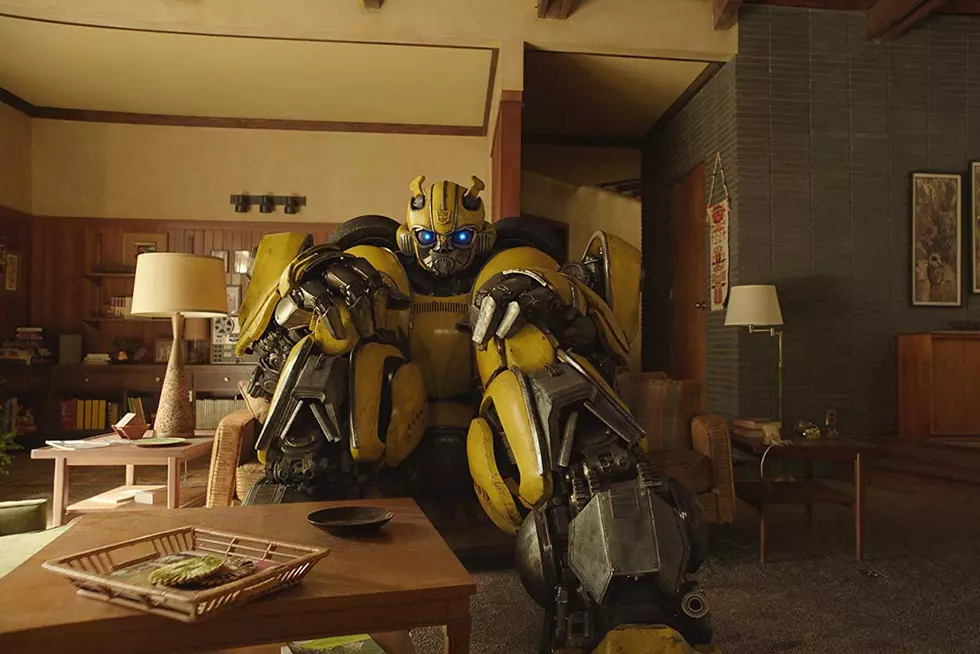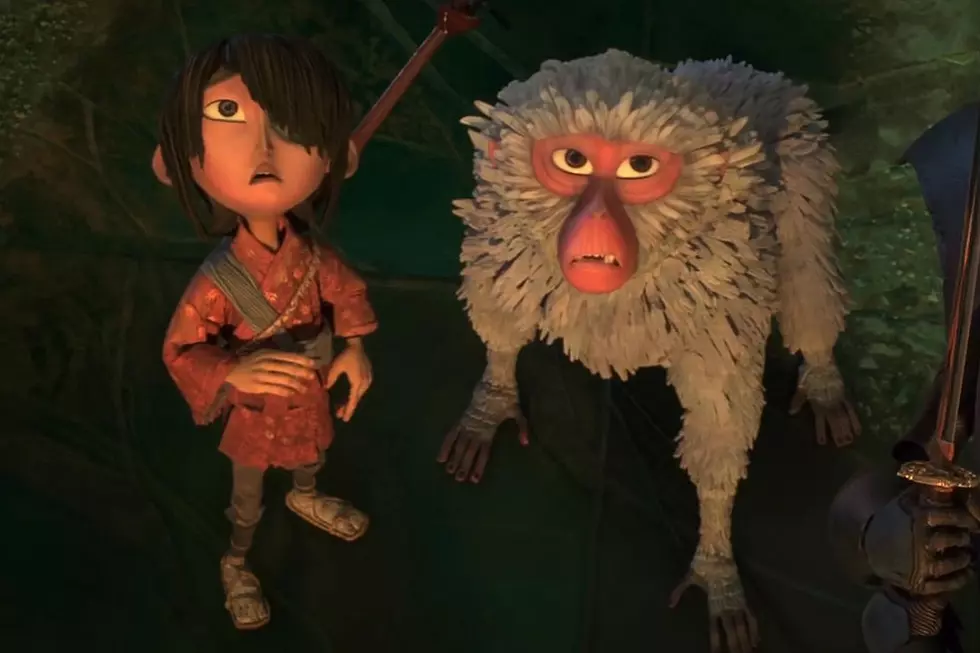
‘The Boxtrolls’ and Laika: The Bad Boys of Studio Animation
There’s a particular scene in ‘The Boxtrolls’ that truly exemplifies the bravado of Laika – an almost “I don’t give a f---” attitude toward focus groups and the societal norms of what an animated films should be. The problem is, this scene can’t be described in its full detail because it would be considered a spoiler. Let’s just say that, instead of redemption – a theme we see quite often in animated films – a character explodes. He literally explodes off this mortal coil with no chance of any kind of redemption ever again … or breathing, for that matter.
“I anticipated fighting for it,” co-director Graham Annable remembers about that particular scene, “We played it and Travis just started busting laughing.”
The Travis who Annable refers to is Travis Knight, the (let’s be honest) dashing 41-year-old CEO of Laika who once released a rap album under the name Chilly Tee. At Comic-Con this past July, an audience member made a passing reference to the possibility of there being “farting” in ‘The Boxtrolls.’ At the end of co-director Anthony Stacchi’s fairly benign answer about how that wouldn't happen, Knight added with a touch of contempt, “But not a fart, this ain't Dreamworks.”
A couple of moments later, after the audiences responds with a cascade of “Ohhhhh”s, Knight, stone faced, rethinks what he had just said … then he shrugs.
Today, Knight expresses some regret for that comment, “That was a good-natured ribbing.” I then ask Knight if he’s naturally competitive against the other animation studios, he responds, “Yeah, of course, it’s sort of scored in my DNA, I guess.” He continues, “You sort of don’t think of artists as competitive, but it’s sort of necessary with what we do to try to get everyone to kind of live up to the top of their game.”
Laika is known for specializing in stop-motion animation, and the studio gets a lot of attention for the painstaking process of animating a film in this way – a process that other studios have long since abandoned. (Though, Knight admits there’s a misnomer about the length of the process; animating a Laika film takes about 18 months, which is on par with other animation techniques.)
Their first film was 2009’s ‘Coraline,’ a film that made just under $125 million worldwide and garnered an Academy Award nomination for Best Animated Feature. Its second film, ‘ParaNorman,’ didn’t do quite as well at the box office, but it, too, earned itself an Oscar nomination.
Let’s talk about ‘ParaNorman’ for a bit. This is a movie with a pair of highly entertaining, though fairly mainstream, first two acts. Then, in the third act, we realize that the reason the town is being haunted is because a little girl was accused of witchcraft … and is then executed by the townspeople. The depiction of executed adolescents is not something we often see in something that considered a family film, but, again, this is Laika. It’s also revealed that one of the teenagers in the film is gay, presented in such a throwaway manner that I’m almost embarrassed to bring it up now. These are not tropes we are going to see in, say, ‘Despicable Me 2.’
“We absolutely don’t focus group our films,” says Knight, making a claim that I absolutely believe. “Things like ‘Pinocchio’ and ‘Snow White,’ those things had an artful balance of darkness and light,” adds Knight -- but what about today? “It kind of has to be palatable for it to be a babysitter for the children. I think that’s just become generally what people think of as these kinds of films, but I just think that’s crummy storytelling.” (If we were in front of an audience, I imagine right now we would have heard a round of “ohhhhhhh”s.)
Everybody knows what a Laika film is,” says ‘The Boxtrolls’ co-director Anthony Stacchi, “they know they’re going to get something different. At Sony … we kind of got lumped into other stuff.” He adds, “When I was at Sony, there were great people there; really talented people … it’s like, everybody wants to make successful movies. There has to be something else … You can’t just say, ‘We want to make movies like ‘Shrek.’’”
‘ParaNorman’ eventually lost the Oscar to ‘Brave,’ a muddled Pixar movie that snobby cinephiles would label as “lesser Pixar” (that is, if snobby cinephiles actually watched Pixar movies). “Of course we would have loved to have won,” says a this-time diplomatic Knight (when I had said something disparaging about ‘Brave,’ he laughed, but quickly pointed out that I said it, not him), “but you also have to keep in mind, we are a small studio … in the armpit of the Pacific Northwest.” Adding, “For people to even think about us in the same breath as the big boys, that’s something. That’s an accomplishment.”
“Adults like redemption stories; kids want justice,” says Stacchi. And this would explain a lot about what happens during the events of ‘The Boxtrolls.’ The title characters are just that, trolls who live in little individual boxes. Based on the 2005 book, ‘Here be Monsters!’ we enter this world where a lot of the humans – mainly a lactose intolerant man who loves cheese named Snatcher (voiced by Ben Kingsley) who hunts the Boxtrolls in exchange for societal accolades – are uglier than the aforementioned trolls.
Knight defends his villain, “Even though he’s awful – and he is -- the whole society is awful and corrupt.” Knight continues, “This guy so badly wants to be a part of this group, and society and his own body is saying, ‘This is not the right thing for you.’”
It’s here that I have successfully resisted trying to use Knight’s words about “society” in ‘The Boxtrolls’ and making the case of a grand metaphor about the movie industry. I didn’t do that, but I when I asked Knight about his marketing budget – which pales in comparison to the bigger studios – he says, “Some of the big studios that have the kind of budget and pressures they have, you have to be calculating and populace. I don’t think you can push on the edges of the form. You have to appeal to every single demographic. You have to appeal to everybody on Earth in order make back your production budget. The fact is, I don’t think you get very interesting films when you do that sort of thing.” (Maybe I should have attempted that grand metaphor.)
On Knight’s 1993 rap album, ‘Get Off Mine,’ mixed in with song titles like ‘Audi Like Jetta’ and ‘Snap Ya’ Neck To This’ and ‘Just Do It’ (it’s not a coincidence that Knight’s father co-founded Nike), there’s a track titled ‘Krises of Identity.’ Spelling aside, if there’s one thing that Knight and Laika don’t have right now … it’s a krises of identity. They know exactly who they are and they are not afraid to tell you. And, no, there will be no farts.
Mike Ryan has written for The Huffington Post, Wired, Vanity Fair and GQ. He is the senior editor of ScreenCrush. You can contact him directly on Twitter.[googleAd adunit="cutout-placeholder" placeholder="cutout-placeholder"]
More From ScreenCrush









